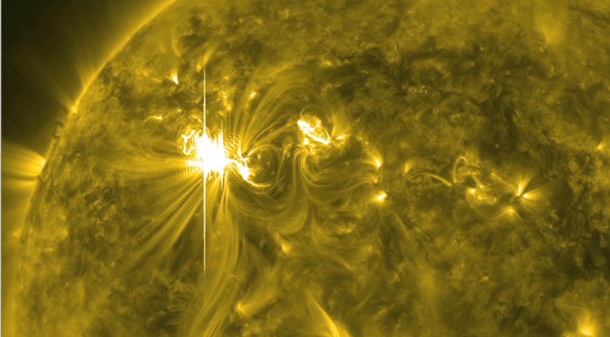Solar storm hits Earth

The predicted impact on the Earth of the Sun's recent energetic Coronal Mass Ejection (CME) happened on Thursday at 1100 GMT, the American National Weather Service's Space Weather Center has reported.
"The coronal mass ejection (CME) associated with the R3 (Strong) Radio Blackout event from 0024 UTC March 7 (7:24 p.m. EST March 6) arrived at ACE at 1045 UTC today (5:45 a.m. EST March 8)," the report said.

A coronal mass ejection from the sun has hit the Earth. Image credit: NASA/SDO/AIA
The Sun has been unusually active for the past week, with a string of coronal events leading up to one of the most powerful ejections of matter from its surface in five years. This general level of activity is to be expected at this point in the eleven-year solar cycle, number 24 since record keeping began, which will most probably reach its peak in the next two years.
This CME, although not directed directly at Earth, does have the potential to disrupt satellite communication over the next few hours, and at the time of writing there was no indication that it had reached its peak.